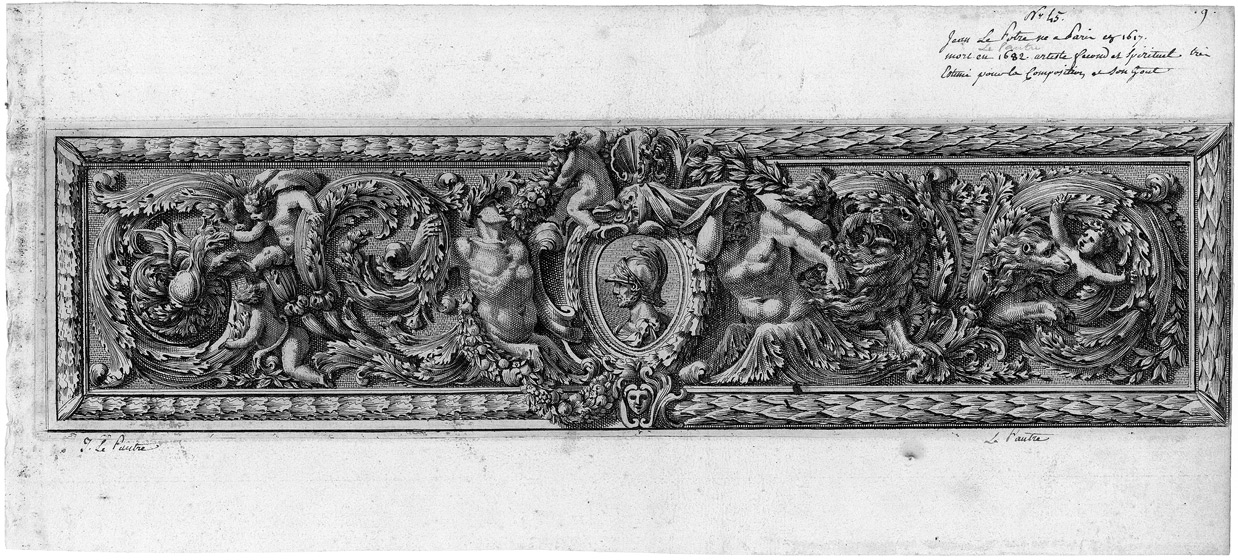Loading the page ...
Jean Lepautre
(1618 – 1682, Paris)
Frises en manière des bas-reliefs, dans des bordures. Set of six etchings. Each ca. 11.4 x 42.8 cm. Inventaire du Fonds Français (Graveurs du XVIIième siècle), vol. II, 1543–1548, I (of II). Watermark: Bunch of grapes in double circle with letters Colombier (Heawood 2428–29, ca. 1655).
Born into a Parisian family of artists, Jean Lepautre is one of the most imaginative and productive ornamental engravers in the history of European printmaking. An inexhaustible exuberance of Baroque inventiveness characterizes the creative urge of this artist, whose oeuvre of ornamental etchings and designs for the applied arts exceeds 2,300 sheets. Lepautre also devoted himself to landscape etching and produced prints on religious and mythological themes. He learned his trade as a graphic artist from the menuisier Adam Philippon, whom he accompanied to Rome about 1645 and whose designs formed the basis for his first series of prints. In Italy, Lepautre studied the antique and his profound knowledge of classical forms was to become a constant feature of his own production as a printmaker, which he embarked on with enormous energy in 1645. In 1677, Lepautre became a member of the Académie Royale.
The present set conveys a convincing impression of the technical refinement and the remarkable iconographical diversity of his prin ted oeuvre. The lush, luxuriant garlands, tendrils and acanthusleaves have an almost tactile quality and radiate tremendous vigour and fertility. Ancient gods, satyrs and other fabulous creatures wallow in lustful or warlike pursuits and blend in with the wildly proliferating ornamentation in an artistically organic way. Just as varied are the stylistic inspirations on which Lepautre draws. Compositional schemes and pictorial motifs taken from antique tomb reliefs are combined with a canon of figures that owes much to Michelangelo and Annibale Carracci. The whole is animated by an impetuous inner dynamism of Baroque exuberance and yet is imbued with a spiritual lightness.
Superb, contrasting and sharp early impressions with margins around the distinct platemarks, before the address of Le Blond. With old annotations in pen and brown ink in the margins, with original binding holes in the left white margin, slight aging, otherwise in excellent condition and of museum quality.
